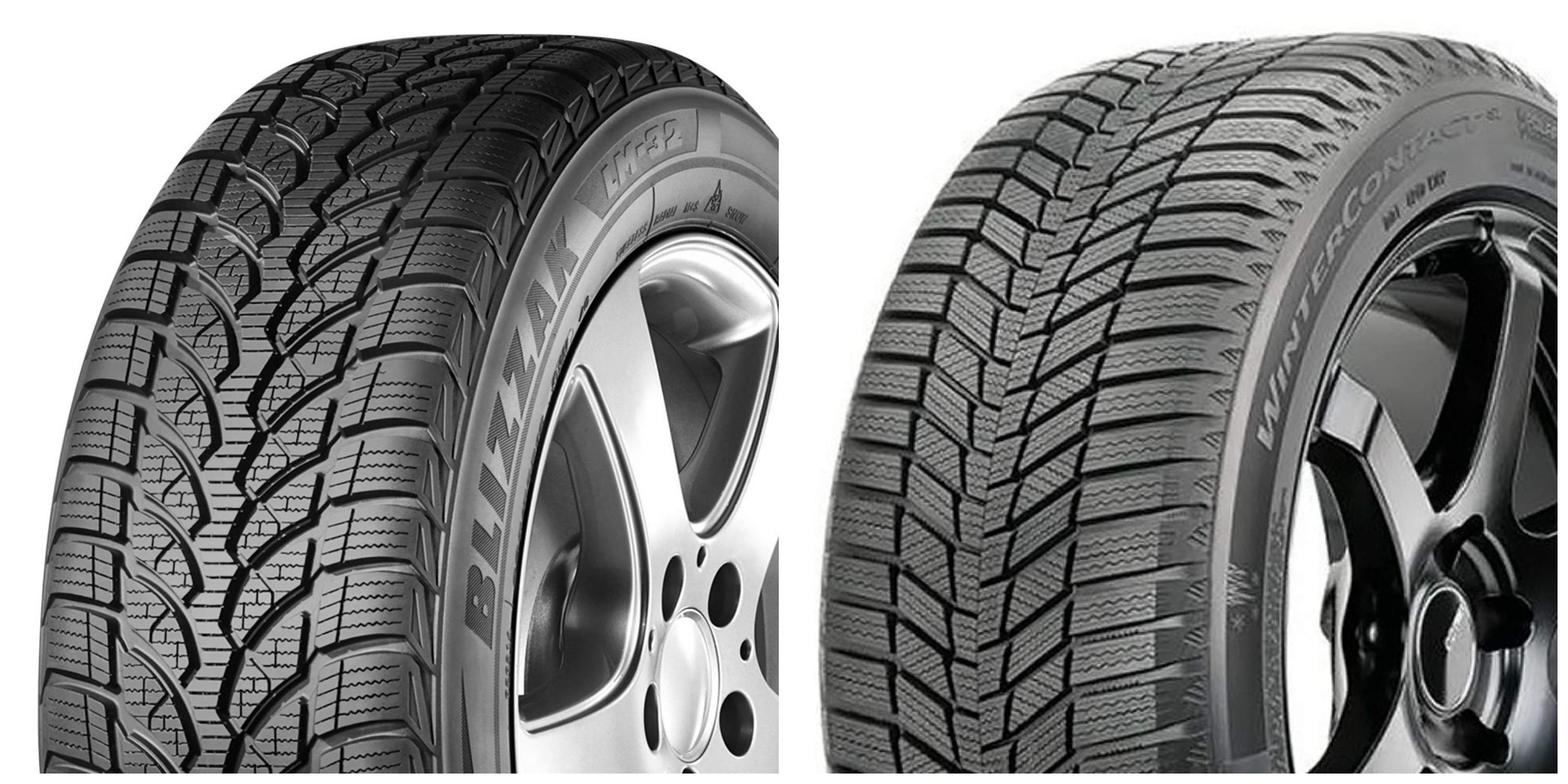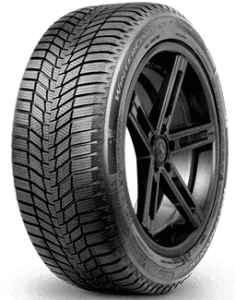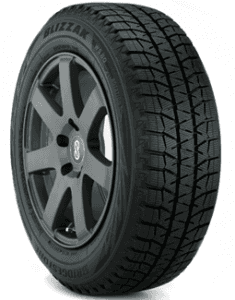Bridgestone Blizzak Vs. Continental WinterContact SI
Fun Fact: Over 35% of Americans can’t tell if a tire has gone bald and needs to be changed. And only 17% know how to check tire pressure, according to the US Tire Manufacturers Association.
A decent set of tires ensure the safety of passengers with good road grip steering control.
Forty-nine of 50 states in the US see snow each year — except Florida! And we are assuming you do not live in Florida. Read on as we guide you on what winter tires to choose for your beloved ride and get through the winter season!
When snow hits the ground, do you stop going out and just stay indoors? Living in snowy regions does not give you a free pass from your routine activities.
And you know how stressful commute gets in winters – from heavy snow to slippery slopes – driving becomes a lot more difficult. You need good braking power, steering control, and traction to ensure a safe driving experience.
Yes, you may have the best car on the block, but is that enough?
You still need to get the best tires out there. Mounting the best all-season tires may give your car the much-needed stability, but such tires cannot perform well in heavy snow.
We suggest you invest in a good set of winter tires. To guide you on choosing the best winter tires, we compared two tires that are quite popular among motorheads.
The Bridgestone Blizzak WS80 and the Continental WinterContact SI. Let’s dive in and explore each option.
Continental WinterContact SI
Continental AG, a.k.a Continental, has been making good tires for the past 135+ years. It has something for all cars — big or small, standard or an ultra-high performance vehicle. The company produces some of the best all-season and seasonal tires.
To improve on their outstanding winter range, the company released the Continental WinterContact SI, which is an upgrade to the ever-so-popular, ExtremeWinterContact series. They took in all the negatives and positives thrown their way from loyal customers — and used the criticism to make the tire even better.
The primary focus of Continental was to improve on the tire’s braking power on snowy roads, and better rolling resistance for fuel efficiency.
The SI stands for Snow and Ice and is recommended for sedans, coupes, crossovers, and minivans. Whether you drive through slippery slopes on your route, or heaps of snow — the tire provides excellent traction on wet and snow-ridden surfaces.
Let’s delve in and explore further.
Product Information
Featuring the PolarPlus Technology, the Continental WinterContact SI has a much better grip as opposed to summer tires. The treads remain uniform even when temperatures fall below 45 F°. This is possible because the PolarPlus Technology uses +Silane for the tread compound.
Also, the tread compound has a directional tread pattern, which allows for better dry-road handling and traction — no matter how crazy the weather gets!
The design has zig-zag sipes and more biting edges for better control on wet roads. And to facilitate traction and short braking distance, the tire has three-dimensional biting edges on the base of the grooves.
The tread depth indicator warns the driver when the treadwear reaches 50%.
The Continental WinterContact SI can withstand grim winter conditions and function well. The tire is branded with the 3PMSF symbol, which means the tire meets industry standards for winter tires.
Lastly, the tire is available in size 15 – 19, and has either a T or H speed rating.
Pros
- Excellent grip on snow
- The tire performs well in dry conditions
- Available in many size options
Cons
- Some drivers feel the tire doesn’t help with vehicle cornering in winters
Bridgestone Blizzak WS80
Founded in 1931, the Japanese brand, Bridgestone, is famous for producing quality tires.
Even if you don’t know much about cars – or tires – we are very sure you have heard of Bridgestone!
The manufacturer’s Blizzak series has been making waves in the winter-tire market, and the popular WS80 is the preferred choice of many drivers.
The prior variant in the series, Blizzak WS70, achieved record sales. To improve the driving experience, Bridgestone launched the WS80 to give motorheads an even better tire for their rides.
The studless ice and snow tire can be seamlessly mounted on sedans, coupes, and minivans. The ride is comfortable and safe with the WS80.
Product Information
What makes the Bridgestone Blizzak WS80 unique is the NanoPro Tech multi-cell compound used in its development.
The tread pattern seeps in water and evacuates it during rotations— so the inside of the tire always stays dry. The compound allows reduces chances of hydroplaning.
The NanoPro Tech compound keeps the tire flexible – no matter how low the temperature gets – the tire maintains uniformity.
And this is precisely what we noticed when testing the WS80 on snow-covered surfaces. The vehicle maintained contact with the ground and remained stable.
When compared to its predecessor, the Bridgestone Blizzak WS80 has slightly smaller shoulder blocks. The design allows for more lug channels, and a 20% increase in snow-biting edges on the tire.
The tire-to-road contact remains maximum at all times because of the way it is built. Plus, all encountered forces are distributed evenly so the driver has better control.
The 3D zig-zag sipes make sure the tire doesn’t flex much on the inside. It slows down treadwear and adds to the longevity of the tire.
The steering control, braking distance, and vehicle cornering is beyond impressive on the WS80. The Bridgestone Blizzak WS80 is also certified with 3PMFS symbol.
The tire is available in size 15 – 18, and has a rating of either T or H.
Pros
- Good grip
- Traction control is decent in snowy conditions
- The treadwear doesn’t happen too fast
Cons
- Performance on dry roads isn’t too impressive
Difference Between The Two Tires
After conducting various tests in different conditions, we noticed that both tires are almost equally as good.
The Continental and Bridgestone are both leading brands in the tire market— buy either, and you are set to power through the winters!
Both tires performed well in our tests, here are some minor differences that we would like to point out though:
The WS80 was slightly better at acceleration than the SI – when mounted on the same car – the Blizzak reached the endpoint 21 seconds faster.
Braking distance was almost at par when the brake was floored at a speed of about 12 m/h — both cars came to a complete stop within 28.4 feet.
Bridgestone performed a little better in heavy snow. It outperformed the Continental tires and the treadwear was also slow on the WS80.
Due to its tread compound, the Continental WinterContact SI performed well on dry roads.
We feel the WS80 had a little noise as compared to the Continental which was almost noise free. It is because the tread compound used by Continental provides better hydroplaning resistance.
On average, the Continental WinterContact SI will cost you about $70.42 – $174.32 and you can buy the Bridgestone Blizzak WS80 for $72.32 – $169.78.
| Comparison | ||
| Aspect | Bridgestone Blizzak WS80 | Continental WinterContact SI |
| Diameter | 24.9″ | 24.9″ |
| Width | 8.4″ | 8.4’’ |
| Rim Size | 16″ | 16’’ |
| Weight | 21 Lbs | 20.6 Lbs |
| Revolutions Per Mile | 837 | 834 |
| Maximum Load | 1356 Lbs | 1477 Lbs |
| Air Pressure | 44 PSI | 51 PSI |
| Tread Depth | 11/32″ | 10/32″ |
| Rim Width | 5.5-7.5″ | 5.5-7.5″ |
What We Like/What We Didn’t
- Both tires performed well in snowy conditions but the WS80 fared slightly better
- The Continental WinterContact SI was excellent on dry roads
- The treadwear on both tires is equally as good
- Good braking power, traction, and steering control with both tires
- Hydroplaning resistance is better on the Continental
- The WinterContact SI made very little noise
- The Bridgestone Blizzak WS80 did not perform too well on dry surfaces
- Cornering in the snow with the WinterContact SI could have been better
Our Advice
It goes without saying now that – if you live in a region accustomed to snow every year – you need to invest in quality winter tires.
Although both tires are decent for any car, we feel if you experience extreme winters you should buy the Bridgestone Blizzak WS80.
But if you get to drive in all conditions the Continental WinterContact SI will be a better choice!



